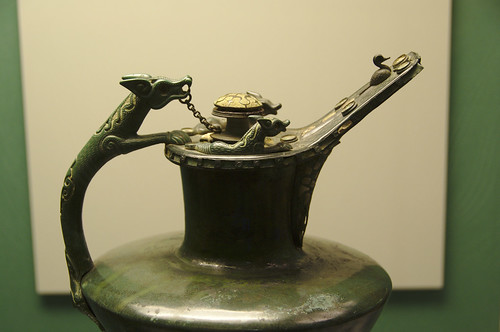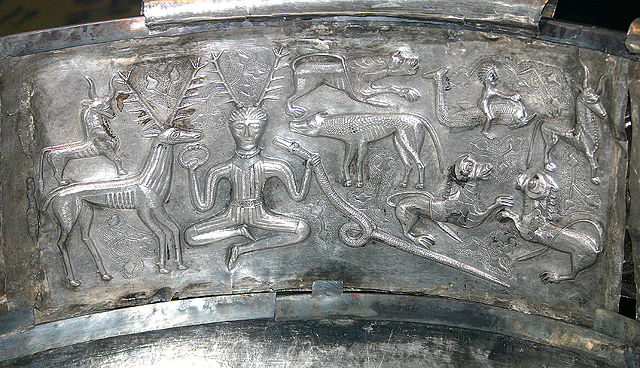The last part of this chapter of the Middle East book covers the end of the 2nd Millennium BCE, it first looks at the return of Assyria as a power in the region. Then it talks about Bronze Age Collapse which occurs in the 12th Century BCE and ushers in what is sometimes called a “dark age”. The big powers (Egypt, Assyria) wobble but many of the smaller states suffer a severe crisis. The power vacuum this leaves sets the stage for the “Age of Empires” as the next chapter of the book refers to it.
Orientation Dates:
- 1600-1046 BCE: The Shang Dynasty of China (post).
- 1550-1069 BCE: The New Kingdom in Egypt.
- 1351–1334 BCE: Reign of Akhenaten in Egypt.
- 1332–1323 BCE: Reign of Tutankhamun in Egypt.
- 1279–1213 BCE: Reign of Ramesses II in Egypt.
- 1186-1155 BCE: Reign of Ramesses III in Egypt.
Power Struggles: The Rise of Assyria
Assyria had been a notable power in the region around 1800 BCE, but by 1750 BCE it was practically a vassal to the Babylonians – although there is some limited evidence that there might’ve been a greater degree of autonomy than the term vassal would suggest. At some point in the 16th Century BCE Assyria becomes a vassal of the Mitanni – although the (later) Assyrian King List keeps on listing names of kings for this period there are no contemporary Assyrian royal inscriptions at all from this period. So the “kings” may well’ve been governors installed by the Mitanni in some sense. There’s also some textual evidence to suggest that the Assyrian kingdom wasn’t a cohesive whole during this time – it may’ve been fragmented into several vassal kingdoms of the Mitanni.
Assyrian royal inscriptions reappear in the archaeological record around 1420 BCE, and they start to appear in the diplomatic record again shortly afterwards. By the time Ashuruballit I takes the throne in c.1363 BCE Assyria regards itself as an independent state, capable of participating in diplomatic gift exchanges with Egypt (as recorded in the Amarna letters). 50 years later the Assyrian kings are once again styling themselves “Mighty King, King of Assyria”, reflecting Assyria’s return to the status of major power in the region.
Under Adad-nirari I (ruled c.1305-1274 BCE) the Assyrians conquered the Syrian region where the Mitanni kingdom had once been – not once, but twice. The Mitannian kingdom had given way to a new state called Hanigalbat, and Adad-nirari I’s first campaign against them was justified as retaliation for hostilities committed by the Hanigalbatean king Shattuara. Shattuara was captured and “encouraged” to become an Assyrian vassal, but his son requested help from the Hittites which prompted Adad-nirari I to invade once more, this time finishing the job and retaining control of the region. Adad-nirari I also successfully campaigned against the Kassite rulers of Babylon, pushing the border back into what had previously been Babylonian territory. But culturally speaking the Assyrians looked to Babylon – using Standard Babylonian in written texts (instead of the Assyrian dialect of Akkadian) and revering Babylonian gods. And Adad-nirari I also managed to get himself accepted as an equal of the Hittite king Hattusili III, with all their diplomatic correspondence addressing each other as “brother”. So by the end of his reign Assyria was once more the equal or superior of any of the major powers in the region.
Shalmaneser I succeeded his father as king of Assyria in c.1273 BCE and continued the military expansion of the Assyrian kingdom. As well as putting down another revolt in the Hanigalbat kingdom to the west, Shalmaneser I also campaigned to the north of Assyria. The peoples he fought there were the Urartians, which is the first time they are documented – in later centuries they were to become a powerful kingdom but at this point they were apparently not yet unified. Relationships with the Hittites cooled during Shalmaneser I’s reign – the Hittites attempted to encourage an economic embargo against the Assyrians. Shalmaneser I was also notable for beginning the practice of systematically deporting conquered peoples, using them as an important part of the workforce in the kingdom’s heartland.
Shalmaneser I was succeeded by his son Takulti-ninurta I, who may be the real person behind the biblical stories of Nimrod or the stories of the Greek king Nino or Ninus.* Takulti-ninurta I ruled for a long time, 36 years, and expanded the Assyrian territory further into Anatolia and Babylon. After he had conquered Babylon he install Assyrian governors to directly rule the city, and also uprooted several of the religious artifacts from that city and transported them (and some of the associated ritual practices) to Assur. This did not go down well with the Babylonians, nor with the Assyrians. Perhaps due to tensions with the elite in Assur Takulti-ninurta I founded a new capital across the river Tigris from Assur, making a big deal that it was founded on virgin soil. Much of what is known about his reign comes from an Epic that was composed to celebrate his victory over the Kassite rulers of Babylon (presumably commissioned by Takulti-ninurta I). It’s very much a justification of his moral superiority over the defeated foe. Takulti-ninurta I almost certainly died by assassination, and Assyria went into decline for about a century after his death in c.1208 BCE.
The next important ruler of Assyria was Tiglath-pileser I, who ruled from c.1115-1077 BCE, who reorganised the military and set about re-expanding the Assyrian kingdom. He’s the first Assyrian king that we know to have recorded annals for his reign. They’re not dated, nor are lengths of the campaigns mentioned, but his military campaigns are listed in chronological order in these annals. I’m not sure how they know it’s chronological if there are no dates – perhaps internal evidence from the text? He campaigned in the same regions that his predecessors had done – against the people to the north (who at this point were the Mushki), into Anatolia amongst the Neo-Hittite kingdoms, against the peoples in modern day Syria (including Arameans living near the Euphrates), and against the Babylonians. He’s also known to modern archaeologists for gathering together a collection of documents we now call the Middle Assyrian Laws. These seem to’ve been his library copy of a selection of original texts written 300 or so years before his time, covering a wide variety of subjects including things like blasphemy, abortion, inheritance, maritime traffic. He was probably also assassinated, and once again the Assyrian kingdom went into decline for around a century.
The book now breaks from its chronological trot through the rise of the Assyrians to talk about the Sea Peoples, the fall of the Hittites and the ensuing Dark Age. The name “the Sea Peoples” comes from Egyptian texts, starting with sporadic mentions in the time of Ramesses II (reigned c.1279-1213 BCE) through to more frequent mentions in the time of Ramesses III (reigned c.1184-1153 BCE) who had to fight a series of battles against them (which he records on the walls of the temple at Medinet Habu). There are also references in texts from countries in the Middle East of destruction around this time period, and there is archaeological evidence of increased destruction taking place – archaeologists presume that both of these strands of evidence are referencing the same peoples as the Egyptian texts. So who were the Sea Peoples? The short answer is that we’re not entirely certain but there’s a reasonable amount of evidence to link specific named groups of Sea Peoples to people who had previously been living in the Aegean and Anatolian areas. There’s also archaeological evidence of abandonment of settlements in Mycenaea around this time. It’s not at all clear why these peoples were on the move – the reliefs at Medinet Habu depict not just soldiers but families, so it seems that this was migration rather than purely military expeditions. Famine or sudden climate change have been put forward as potential explanations for the migrations, but there’s no consensus. There’s also no consensus on how much of an effect the Sea People’s migrations had on the region – although it seems plausible that they did contribute to the destabilisation that occurred in this time period.
The fall of the Hittites is a part of that destabilisation. The deterioration of the state appears to’ve started during the reign of Tudhaliya IV (c.1237-1209 BCE), and the last of the Hittite kings was Suppiluliuma II (c.1207-1190 BCE). The causes are unclear – conflict with the Assyrians certainly played a part, and probably so did conflict with the Sea Peoples. One key military conflict during Suppliluliuma II’s reign was with people based on Cyprus, to protect grain shipments heading from modern Syria into the Hittite kingdom. The people on Cyprus at the time may or may not’ve been Sea Peoples who’d settled there. Ultimately the Hittites were unable to sufficiently protect their grain shipments, and that caused famine. There’s even a reference in an Egyptian text (dating to the reign of Merenptah) to a shipment of grain being sent to the Hittites as aid. What exactly the coup de grace that finished off the Hittites was is unknown – some cities show evidence of destruction as would be caused by an invasion, some cities show evidence of abandonment instead.
The next 300 years or so (c.1200-900 BCE) is referred to as a Dark Age – as with other Dark Ages this is because of a lack of textual evidence for the era in question. The Babylonian and Hittite kingdoms had both collapsed, and Egypt and Assyria were both weakened. This meant that there was a power vacuum and new players rose to prominence. In Babylon (which had been ruled by a Kassite dynasty) a new local dynasty rose to prominence, although it wasn’t a match in power for its predecessors. Harassing both this Babylonian dynasty and the Assyrians were the Aramean peoples who were spreading into Mesopotamia proper from Syria where they had settled. In the long term they were very succesful at infiltrating into Mesopotamia – their language, culture and alphabetic script all rose to prominence in the 1st Millennium BCE.
The chapter finishes with a four page spread about the Bible and its relation to the history of this period. Parts of this section read like one person wrote it, and another went through scattering “if it really happened” and other such phrases at judicious intervals! Which makes it quite hard to sum up, as almost every paragraph ends by undermining everything it just said. There are possible linguistic and cultural similarities between what the Old Testament says about the Patriarchs and the city of Mari on the Euphrates. There are possibly cultural parallels with Ugarit (in particular Ugaritic poetry), and the Ugaritic language is very similar to Biblical Hebrew. The author here spends a while trying to place the time period of the Exodus – whilst saying that there’s “no evidence but”. They settle on 19th Dynasty prior to the reign of Merenptah, as far as I can tell. They note that the Biblical laws are remarkably similar to the laws of earlier times in Mesopotamia. Interestingly the key difference is that the Mesopotamian ones are generated by the king (and then offered to the gods for approval) but the Israelite laws are created by God who presents them to humanity (as a take it or leave it deal, not for approval). There were, I think, more nuggets of interesting information in this bit of the chapter than I’ve presented here – but something about the tone of it set my teeth on edge (as I’m sure is apparent).
The next chapter of the book will start by returning to Assyria – the Age of Empires is about to begin.

